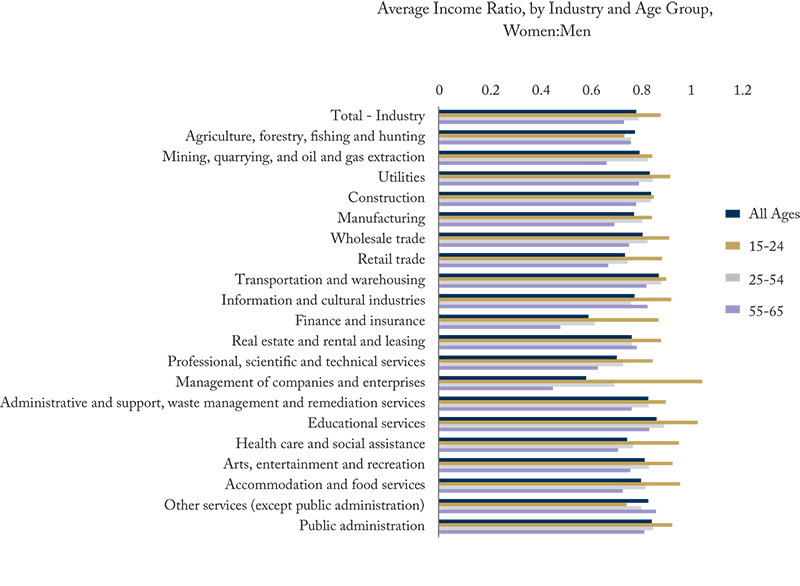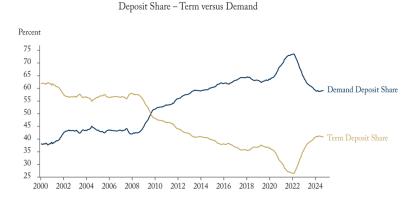A significant amount of research investigates gender wage gaps, and there are several hypotheses to explain their persistence, including glass ceilings or sticky floors.
A glass ceiling exists when the pay gap is significantly larger at the top of the earnings distribution, while a sticky floor is when the wage gap is larger at the bottom. Notably, in Canada, census data and research suggest more of a problem with glass ceilings than with sticky floors.
In recent years, more progress has been made in reducing wage gaps at the bottom of the income distribution than at the top (Statistics Canada 2023). At the lower end of the distribution (5 percent), hourly-wage gaps between Canadian-born men and women significantly declined from 2007 to 2022, ranging from 3 percent for Canadian-born women to 6.3 percent for indigenous women and immigrant women who arrived as adults. Meanwhile, at the upper end of the distribution (95 percent), there was no or modest improvement between 2007 and 2022 and the gap was 24 percent for Indigenous women; 20 percent for immigrant women who arrived as adults; and 13 percent for Canadian-born women, compared to Canadian-born men in 2022.
The composition of the labour market and improving labour qualifications of women are the main factors contributing to lower wage gaps over time. Women have become more educated, are an increasing share in professional jobs, and there has been declining unionization rates in male-dominated industries.
Notably, recent census data highlights additional insights and trends across industries and age groups.
The proportion of women relative to men in each industry shows a familiar story. Unsurprisingly, women make up the highest proportion of labour in healthcare, relative to other industries, comprising 79 percent of full-time employees. According to the most recent census data, the construction industry is the most male-dominated, with women making up just 13.7 percent of full-time workers. Women also represent 44.7 percent of full-time employees across all industries and more than half in the food service and accommodation industry, educational services, management of companies and enterprises, and the finance and insurance industry. Women’s average income across industries where they represent the majority of employment range from $37,520 in food services and accommodation industry to $102,200 for the management of companies or enterprises.
Looking at wages, women who manage companies and enterprises are the most underpaid compared to their male counterparts. The average wages of women relative to men were $0.78:$1. Notably, relative wages for managers are more equitable for younger women than for older women (Figure). Among core working-age women, those 25 to 54 make 69.8 percent relative to men, but women 55 to 64 earn only 45.3 percent of the average wages of male managers of similar age. There is a similar trend across most other industries with young women’s average wages appearing to be more equitable than their older counterparts. This could be explained by a number of factors, including that younger people have less labour market experience and wage gaps are smaller at the lower end of the income distribution, lower education attainment gaps contributing to wage disparities, and the occupational composition of the labour market.
There are many factors contributing to gender income inequality. Women and men occupy distinct occupations in different proportions and women tend to be more highly represented in the lower wage occupations within many industries. Women work about 5.6 fewer hours per week then men on average and face more frequent career interruptions (Moyser 2017).
Data and previous research shows that much progress has been made towards wage equality between genders. However, there is still more work to be done to address wage gaps for women at the top of the income distribution, women working as managers, and in the fields of finance and insurance.
To learn more about gender wage gaps and policy actions to address them see Women, Work and Closing the Gaps with Men and Uneven Odds: Men, Women and the Obstacles to Getting Back to Work with Kids.





